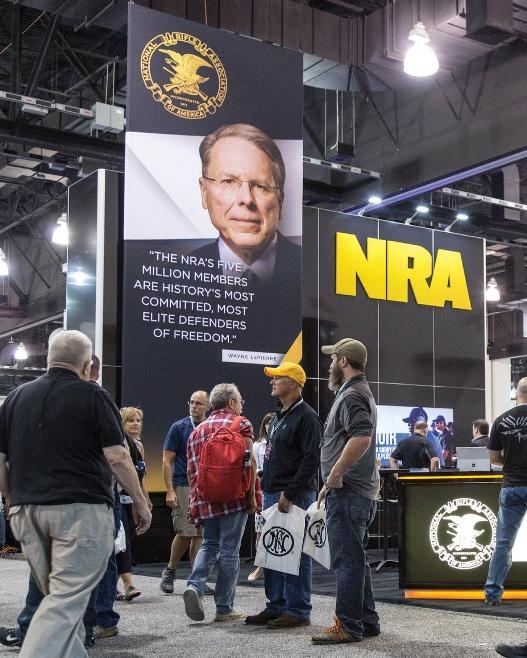
24 minute read
Pro-Gun Senate Majority Is Crucial To Protecting The Second Amendment
NRA-ILA Executive Director
doubt, the impact of a pro-freedom Supreme Court cannot be over-emphasized. And the only way to maintain and expand the number of justices who respect the Second Amendment is with a pro-freedom Senate.
Advertisement
But in addition to the Supreme Court, much more is at stake in the make-up of the Senate.
First and foremost, a loss for pro-gun incumbents and challengers means that Sen. Chuck Schumer, D-N.Y., would be the majority leader. And as we all know, Schumer has made a career of fighting to eliminate our fundamental right to keep and bear arms.
Additionally, we would lose key chairmanships that are vital for gun owners. On the Judiciary Committee, we would exchange Sen. Charles Grassley, R-Iowa, a Second Amendment champion, for Sen. Dianne Feinstein, D-Calif., a senator who is a sworn enemy of gun owners.
With this much to lose, protecting our pro-gun majority must be a top priority in this election.
Toward that goal, I am including information on a number of key races that gun owners can focus on this November. We will be providing additional information on other key Senate races in the coming weeks. These races will determine the future of the U.S. Senate and, with it, the future of our freedoms.
INDIANA
In Indiana, NRA members and gun owners have a choice between current U.S. Sen. Joe Donnelly (D) and businessman Mike Braun (R). Unfortunately, Indiana NRA members and gun owners have not been able to count on Donnelly to fully support our Second Amendment rights. Braun, on the other hand, will be a strong vote for our constitutional freedoms, as demonstrated by his pro-gun voting record in the Indiana Legislature.
MONTANA
Another senator who has failed to keep his word to NRA members and lawabiding gun owners is Jon Tester (D) in Montana. Tester has opposed our rights, including voting for the confirmation of anti-gun Supreme Court Justices Sonia Sotomayor and Elena Kagan. In addition, he voted against Gorsuch. His opponent, former State Senate Majority Leader and State Auditor Matt Rosendale (R), is a true friend to Montana gun owners, so the choice in this race is clear.
TENNESSEE
Tennessee gun owners can help to maintain a pro-gun majority in the U.S. Senate by supporting U.S Rep. Marsha Blackburn (R) in her bid to replace Sen. Bob Corker (R), who is retiring. Blackburn has a long history of supporting the Second Amendment, co-sponsoring national reciprocity legislation as well as legislation to remove antiquated and unnecessary restrictions on interstate firearm businesses. In contrast, her opponent, former Gov. Phil Bredesen (D), twice vetoed NRA-supported restaurant carry legislation and cannot be trusted to support our right to keep and bear arms.
As mentioned earlier, a number of races are still awaiting the results of primary elections, and we will update you on those in the coming weeks. In the majority of these races, there will be a clear choice between a strong pro-gun candidate and a demonstrated opponent of our rights.
Just as in past elections, gun owners can be the grassroots force that protects our freedoms by helping pro-gun candidates achieve victory in November. Please go to the NRAPVF website at nrapvf.org for crucial information and endorsements, so that you can take action to assist the pro-gun candidates in your area. Your efforts in this election will make the difference in keeping a pro-gun Senate majority and securing our rights.
PENNSYLVANIA
This November, Pennsylvania gun owners will have a clear choice between anti-gun incumbent Sen. Bob Casey (D) and Rep. Lou Barletta (R).
During his career in the Senate, Casey voted to ban commonly owned semi-automatic firearms and standard-capacity magazines. He supports further restrictions on lawful firearm transfers as well as raising the age to purchase certain firearms to 21 from 18. He also voted for anti-gun Supreme Court Justices Sotomayor and Kagan—and against Gorsuch.
In contrast, Barletta voted for national reciprocity legislation, voted to end Obama’s anti-gun Operation Choke Point and co-sponsored legislation to remove antiquated and unnecessary restrictions on interstate firearm businesses. He is a strong supporter of our right to keep and bear arms. Pennsylvania gun owners have a clear choice in this Senate race.
NEBRASKA
In Nebraska, Sen. Deb Fischer (R) faces challenger Jane Raybould (D). Raybould, a Lincoln city councilwoman, has stated her support for renewing the 1994 federal ban on commonly owned semi-automatic firearms.
Fischer, on the other hand, has long demonstrated her support for the Second Amendment. While serving in the Nebraska state Senate, Fischer earned an “A+” from the NRA-PVF. Her support for our right to keep and bear arms has not wavered since being elected to the U.S. Senate in 2012. She has voted against banning commonly owned semi-automatic firearms and standard-capacity magazines and signed a letter opposing the anti-gun U.N. Arms Trade Treaty. Her re-election to the U.S. Senate is critical to defending and expanding our firearms freedom.
TEXAS
Texas is another state that could decide the fate of the pro-gun majority in the Senate. Sen. Ted Cruz (R) has earned his “A+” rating by being a champion for gun owners, while his opponent, Beto O’Rourke (D), has earned an “F” rating for opposing our rights.
O’Rourke supports banning guns and magazines, imposing new restrictions on lawful firearm transfers and voted against national reciprocity. He has been a vocal critic of the NRA and our members. He would be a consistent vote against our constitutional freedoms.
In contrast, Cruz has a proven record of supporting the rights of law-abiding gun owners. He has sponsored NRA-supported national reciprocity legislation, worked to fix problems with the National Criminal Instant Background Check System (NICS) and sponsored legislation that sought to end the Obama administration’s anti-gun Operation Choke Point.
Cruz’s seat is one that anti-gun extremists would love to win. We can expect millions of dollars from those opposed to the Second Amendment to flow into the state. It is critical that progun Texans work to ensure that Cruz is re-elected to continue his strong defense of our rights.
NEVADA
In Nevada, Sen. Dean Heller (R) is a staunch defender of our right to keep and bear arms, which has earned him an “A” rating from the NRA-PVF. His opponent, Rep. Jacky Rosen (D), has earned an “F” rating.
Rosen has made her opposition to the rights of law-abiding gun owners a key plank of her campaign, supporting a ban on commonly owned semiautomatic firearms and standard-capacity magazines and expanding restrictions on lawful firearm transfers. She has voted against legislation that would create national reciprocity for Right-to-Carry permits, showing her contempt for the right to self-defense.
Heller, on the other hand, opposes gun bans and supports the right to self-defense. He stood with the NRA in support of Gorsuch’s confirmation to the U.S. Supreme Court.
Nevada is a key swing state. If gun owners hope to keep a pro-gun majority in the U.S. Senate, it is critical to re-elect Heller.



Python Security
Once a neglected collecting category, Colt’s Python remains one of the hottest tickets today. Here is the remains one of the hottest tickets today. Here is the half-century history of the “King of the Seven Serpents.” half-century history of the “King of the Seven Serpents.”
BY GURNEY BROWN GURNEY BROWN
DOUBLE DIAMOND EDITION PYTHON SERIAL NO. DD001
Gurney Brown’s “A Colt’s Python Primer” (July 2018, p. 56), reminded me of a time I carried a Colt Python. In early 1965 I was in the Marine detachment at the U.S. Embassy in Saigon, Vietnam. I was appointed—along with three other Marines—as a member of the personal security unit (PSU) responsible for the safety and security of Ambassador Henry Cabot Lodge and Mrs. Lodge.
Our f rst sidearms were whatever was available, usually S&W Victory models, and there were some 2"-barreled Colt and S&W revolvers. We were also issued Beretta M12 9 mm Luger submachine guns with 40-round magazines, usually carried in a briefcase.
Eventually, in discussion with our leader, Leo Cramsey from the Dept. of State Diplomatic Security Service, we decided we should have more formidable arms, and the Dept. of State purchased six Colt Pythons for us. I can’t remember the exact barrel length, but it was the shortest available.
These were f ne guns, with good single- and double-action trigger pulls, and adjustable sights. Being qualif ed Marine rif emen, we could really appreciate those sights! The only modif cation some of us made was to break the edge of the right upper corner of the rear sight, as these would wear a hole in our shirts or coats since we always wore civilian attire.
As you might imagine, we did a lot of shooting, and a lot of “snapping in.” One day at the police range in Binh Toi, one of the Pythons went “click” instead of “bang.” The f ring pin had split in two, at an angle. No problem, as we had two extra revolvers, and we were sure we could get a replacement f ring pin. Except about a month or six weeks later the same thing happened to another one of our Pythons. I lost all faith in these guns, and switched to my own S&W Model 10 with a 2" barrel or my M1911A1 in .45 ACP.
I always assumed it was a case of improper heat treating that caused this problem. I did not hear of any more f ring pins breaking, and I know the PSU unit still carried Pythons until the end of the war. SGT. HOWARD W. EVERS, USMC (RET.), VIA EMAIL
56 JULY 2018 AMERICAN RIFLEMAN AMERICANRIFLEMAN.ORG JULY 2018 57
n June 1955, Colt’s Mfg. Co.’s new masterpiece, the
Python double-action revolver, was frst shipped from the Hartford, Conn., factory, beginning a half-century of continuous production. Colt’s factory superintendent, Adalbert (Al) Gunther, was heavily involved in the design of what was to become the company’s fagship double-action revolver. It started in 1953 when Bill Henry, Colt’s head salesman, came to Gunther with the idea for a new precision target revolver. Colt had no budget for experimental guns at the time, so the prototype was
Originally paired with an Offcer's ACP as part of a cased made from existing parts and from raw steel, which was set, this .357 Mag. Double Diamond Edition Python has machined and welded as needed. a bright stainless fnish, a 6" barrel and is ftted with The original prototype had a barrel length of 45⁄8", smooth rosewood target-style stocks with nickel-fnished and the barrel rib was solid. That frst gun took almost 150th Anniversary Rampant Colt medallions. a month to complete, with some of Colt’s top foremen— Andy Perkins, Walter Sowinski and George Cramer— involved with the project. The name “Python” came about as the result of a company contest, and it is believed that Philip Schwartz, one of Colt’s vice presidents, came up with the winning name.
Photos by Paul Goodwin Professional Photography
Python double-action revolver, was frst shipped from the Hartford, Conn., factory, beginning a half-century of continuous production. Colt’s factory superintendent, Adalbert (Al) Gunther, was heavily involved in the design of what was to become the company’s fagship double-action revolver. It started in 1953 when Bill Henry, made from existing parts and from raw steel, which was set, this .357 Mag. Double Diamond Edition Python has machined and welded as needed. a bright stainless fnish, a 6" barrel and is ftted with The original prototype had a barrel length of 4 smooth rosewood target-style stocks with nickel-fnished and the barrel rib was solid. That frst gun took almost 150th Anniversary Rampant Colt medallions. a month to complete, with some of Colt’s top foremen— Andy Perkins, Walter Sowinski and George Cramer— involved with the project. The name “Python” came about
Transposed: Smith & Wesson
I think a lot of Garry James, both in his articles and on television, so I hate to bring this up, but I think he transposed the f rst names of Mr. Smith and Mr. Wesson in his “I Have This Old Gun” on the Smith & Wesson Model 1 (July 2018, p. 88). Or do I need to rename my Dan Wesson revolver?
RODNEY TOOLEY, VIA EMAIL
Mr. Tooley is indeed correct—a typist/stenographer I must admit I’m not, but I certainly know Smith & Wesson’s proper f rst names. There is no need to rename his Dan Wesson, and I commend him for his sharp eyes.
I HAVE THIS OLD GUN …
Smith & Wesson Model 1
GUN: SMITH & WESSON MODEL 1 CHAMBERING: .22 SHORT RIMFIRE MANUFACTURED: C. 1863 CONDITION: NRA EXCELLENT (ANTIQUE GUN STANDARDS) VALUE: $1,500
Daniel Smith and Horace Wesson were not men who gave up easily. In 1854 the partners came out with a unique, lever-action, repeating, tubular-magazine-fed pistol. Well-made and mechanically innovative, it suffered a major problem in that the variant of the earlier “Rocket Ball” selfcontained cartridge that it chambered was unreliable, delicate and underpowered. As interesting as the gun was, it was a f awed product. The men’s interest in the arm ceased around 1856 when the company was reorganized as the Volcanic Repeating Arms Co. and taken over by Oliver Winchester.
Undaunted, the pair began work on a new project. As Samuel Colt’s revolver patent was due to expire, Smith & Wesson felt a new type of metallic cartridge revolver was the way to go. Under an agreement with former Colt employee Rollin White, who held a patent on a bored-through cylinder, in 1857 the pair introduced a diminutive seven-shooter chambered in a thenproprietary .22 Short Rimf re blackpowder cartridge.
Measuring just 7" overall with a barrel length of 33⁄16", it was cleverly put together—the cylinder being rotated by a pawl at the rear of the cylinder and locked by a springloaded lever (which also served as a rear sight) inset on the top of the frame.
To load the piece, one pushed up on a latch at the base of the rear, lower portion of the barrel assembly that locked into a notch on the bottom, front of the frame. This allowed the barrel to be rotated upward—hence the gun’s nickname, “Tip-Up”—which permitted the cylinder to be removed and seven cartridges to be loaded into its chambers. The cylinder could then be replaced, making the revolver ready to f re in single-action operation by way of the spur trigger.
Though small in the hand and decidedly underpowered, the Model 1, as it was called, took the public by storm—its ease of loading and f ring trumping the gun’s lack of f repower. Demand was such that initially Smith & Wesson had diff culty keeping up with orders. The f rst version of the Model 1, featuring a rounded frame, of which some 11,671 were built between 1857 and 1860, was re-designed in 1860 into a f at-framed “Second Issue” that was made until 1868, at which date the gun was again altered. This f nal “Third Issue” was produced until 1881.
The Second Issue Mode l 1 shown here is typical of its breed, having a blued barrel and silver-plated brass frame (full nickel or silver plating was also available). Stocks are plain rosewood panels. It is in excellent condition, retaining most of its f nish, and, under normal circumstances, would be valued in the $750 to $900 range. But this example has the added appeal of being exquisitely engraved on the left side of the frame, “Lieut Thos. L. Swann/USN/1st Jan. 1864.”
Research disclosed that Marylander Lt. Thomas L. Swann was a graduate of the U.S. Naval Academy, class of 1856, who retired in 1874 with the rank of commander. During the Civil War, as well as being involved in numerous other clashes, Swann was the ordnance off cer on the steam sloop U.S.S. Brooklyn at the pivotal battle of Mobile Bay on Aug. 5, 1864. After the engagement, he was off cially commended by his captain as having, “everything ready and the working of his department was admirable; he was principally occupied during the action with the bowchasers.” This added bit of naval provenance easily bumps the value of the piece up to $1,500.
American Rif eman does NOT accept submissions for the I Have This Old Gun column. Topics are assigned to Field Editors in advance. Due to the volume of mail received, our writers are not able to answer individual questions. Please consider instead sending your correspondence and questions through our Dope Bag/Q&A service, which is available to all NRA members in good standing. Details appear in the Q&A section.
88
JULY 2018
AMERICAN RIFLEMAN Photos by Jill Marlow
R1807_OLDGUN_new.indd 88 5/11/18 3:49 PM
—GARRY JAMES, CONTRIBUTING EDITOR
CORRECTION: In “A Show Of Strength” (July 2018, p. 38) on the NRA Annual Meetings, we erred in stating that “Directors were elected” during the Annual Meeting of Members. Rather, the results of the 2018 election for the NRA Board of Directors were reported to the gathering.
“Readers Write” affords members an opportunity to comment on material published in American Rif eman. Single-topic letters are preferred and may be edited for brevity. Send letters to: Readers Write, NRA Publications, 11250 Waples Mill Road, Fairfax, VA 22030-9400 or e-mail us at publications@nrahq.org.
Contracts Stack Up For SIG Sauer FBI Awards .40 S&W Contract
SIG’s P320 modular handgun is accumulating a strong selection resume since being awarded the U.S. Army’s MHS contract in 2017. The Chicago Police Dept. has added several conf gurations of the striker-f red pistol to its list of off cially authorized duty sidearms. With more than 13,000 sworn off cers covering 22 districts, the city employs the nation’s second-largest police force. Recently, several other prominent agencies have also selected the P320, including the Tampa, Fla., Police Dept., the Texas Dept. of Public Safety and the Virginia State Police. sigsauer.com
Winchester Ammunition was recently awarded a $16 million FBI contract to supply the Bureau with ammunition for all the .40 S&W-chambered f rearms that remain in service. Although the agency recently made the switch to the Glock 19M in 9 mm Luger, the transition is gradual, and there remains a need for .40-cal. training, Tampa, Fla., Police Dept., the Texas Dept. of Public Safety frangible and duty ammunition that meets the stringent frangible and duty ammunition that meets the stringent FBI performance standards. winchester.comFBI performance standards. winchester.com
U.S. Army Selects PepperBall VKS
The United States Army has awarded a $650,000 contract to PepperBall for its Variable Kinetic System (VKS) non-lethal launcher to give soldiers non-lethal force protection measures when out in the f eld. This decision is in support of the U.S. ForcesAfghanistan (USFOR-A) Joint Force Protection Directorate.
The appearance, feel and f re-control system of the U.S.-made VKS was modeled after the AR-15/M4 carbine. It utilizes a dual-feed system, whereby users can quickly switch between a 180-round, paintball-style hopper, and 10- or 15-round box magazines. The combination allows the VKS to use PepperBall’s accurate, extended-range VXR projectiles and standard round projectiles, alike. PepperBall projectiles are f lled with proprietary irritants that burst upon impact, producing a kinetic impact as well as affecting the eyes, nose and respiratory system. pepperball.com
combination allows the VKS to use PepperBall’s accurate, extended-range VXR projectiles and standard round
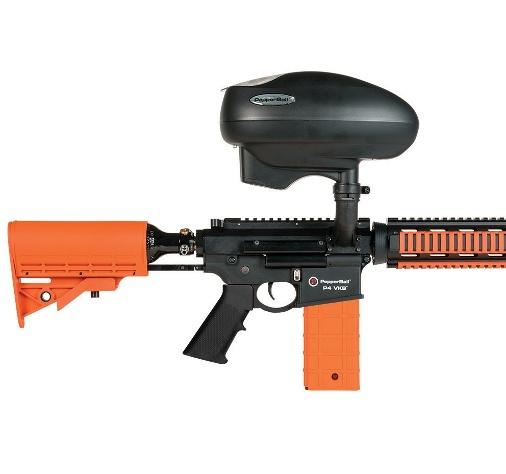
Peiser Sets Rimf re Records
Braden Peiser, a 13-year-old from San Angelo, Texas, set a new USA Shooting national record, twice, at the 2018 Junior Olympics held at the Olympic Training Center in Colorado Springs, Colo. Peiser’s f rst relay of the 50 Meter, Three-Position event earned the young man a score of 1150, beating the national record by three points. The following day, Peiser beat his own new record by an additional three points. He took the top position among competitors in the J3 division—14 years old and younger—with an overall score of 2310, earning him divisional gold in the event. Now, Peiser is setting his sights on another goal—making the USA Junior National Team in 2019. usashooting.org 50 YEARS AGO

are f lled with proprietary irritants that burst upon impact, producing a kinetic impact as well as affecting the eyes, nose
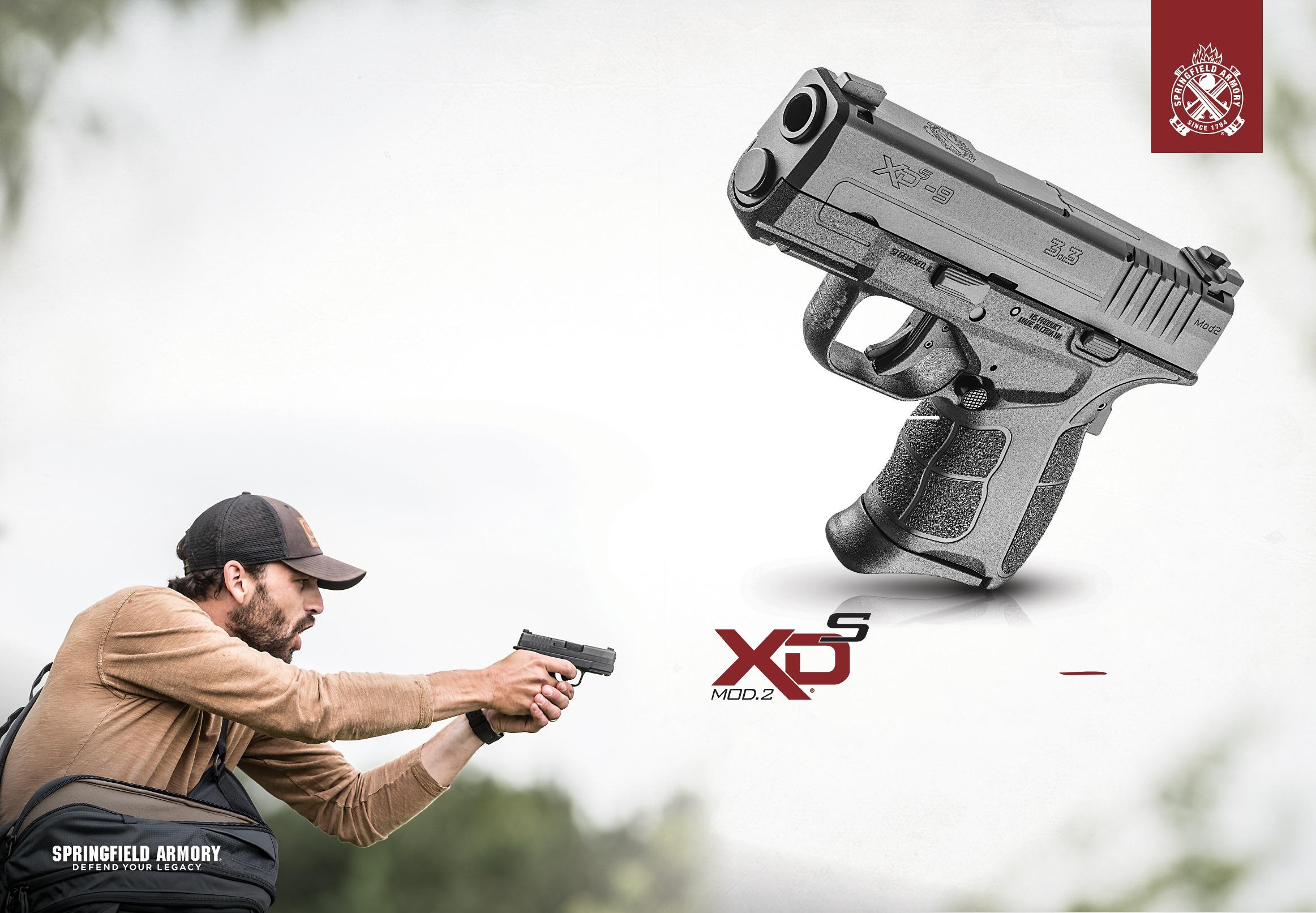
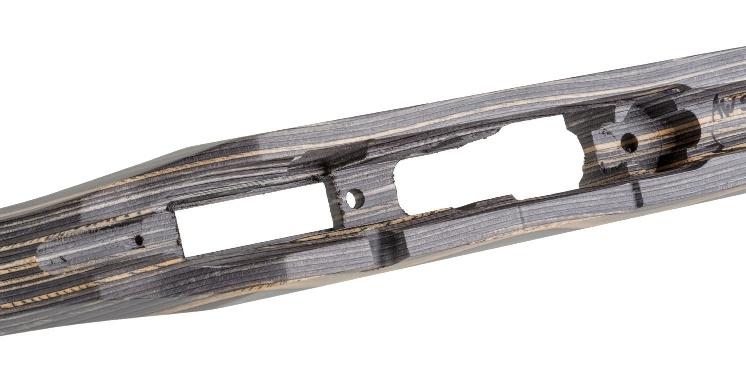
comb and buttplate—users can simply depress the flush-mounted, push-button retainers to finetune a firearm’s fit. The stock also includes a 1/2" soft recoil pad, flush-mounted sling cups on left and right sides of the buttstock, a sling swivel stud at the butt and two more on the fore-end for mounting accessories such as a bipod or a sling. Of the combinations I selected, including a nonlaminated Walnut option (premium price) affixed to the CZ 455, I found the wood finish to be neither too glossy nor too dull. I also liked the feel of the replaceable grip and fore-end panels. Over-molded rubber units, along with color- and pattern-dipped options, are available at extra cost.
Fitment And Use
Inletting of the stocks is clean and precise, and installation of all four barreled actions was simple, although two required some additional fitting. The Mosin-Nagant 91/30, with a Timney Trigger installed, required the action screw holes to be lengthened, and the Ruger American Predator required the V-Block recess to be modified to fit the Ripple Blaze variation I chose—a Dremel tool with a small milling cutter was used, and, after a few minutes of wood removal, the components were ready for final assembly. Of course, those who find such an endeavor unappealing can choose to leave the task to a professional gunsmith.
Across the board, the At-One stock performed as anticipated. I passed an outfitted At-One example around to four shooters, ranging from 7 to 65 years old. Each one was able to manipulate the stock to fit their physique, quickly. The youngster of the group had minor difficulty depressing the adjustment buttons, which was to be expected due to age. The butt pad adjustment range of 1.5" was adequate for tuning the length of pull, and the 9/16" comb-adjustment range enabled all shooters to customize the fit for precise and consistent sighting—regardless of whether or not the host gun employed an optic.
Shooters in the market for fully adjustable, custom gunstocks will f nd Boyd’s At-One series, starting at $189, offers real value with performance features typically found on more expensive products. milling cutter was used, and, after a few minutes of wood removal, the find such an endeavor unappealing passed an outfitted At-One example
—CHRISTOPHER OLSEN, ASSISTANT EDITOR
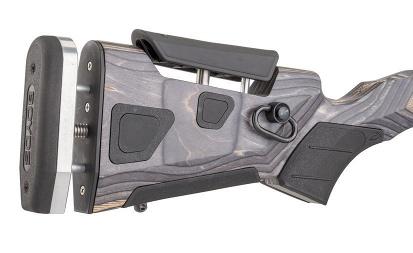
Nomad NWTF Fitted Gaiter
Nomad Outdoor’s National Wild Turkey Federation (NWTF) Fitted Gaiter is a one-size-f ts-all facemask that offers turkey hunters comfortable concealment from the wary eyes of their facemask that offers turkey hunters comfortable concealment from the wary eyes of their prey. Constructed completely from breathable, moisture-wicking polyester, the Fitted Gaiter is prey. Constructed completely from breathable, moisture-wicking polyester, the Fitted Gaiter is lightweight enough for cool, all-day use, and features an anti-microbial treatment and a drawstring lightweight enough for cool, all-day use, and features an anti-microbial treatment and a drawstring around the top that allows for a snug f t. Offered in Mossy Oak’s Obsession and Bottomland camou-around the top that allows for a snug f t. Offered in Mossy Oak’s Obsession and Bottomland camouf age patterns. Price: $25. Contact: Nomad/Marolina Outdoor; (800) 226-7956; nomadoutdoor.com.nomadoutdoor.com.
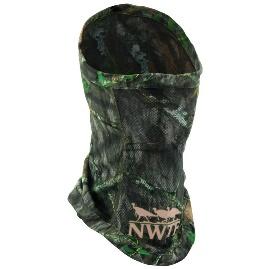
Winchester WWII Victory Series Ammunition
Specially packaged in collector cartons and wood boxes, Winchester Ammunition’s Victory Series honors U.S. warf ghters and veterans of World War II. “Winchester played a vital role providing the ammunition and f rearms used by our military in the defense of our country in World War II, and we are proud to honor those brave U.S. warf ghters who so gallantly fought for our freedom,” said Matt Campbell, vice president of marketing and sales for Winchester Ammunition. All cartridges in the series bear specialized headstamps and are loaded to period-correct specif cations. Chamberings will include .45 ACP, .30-’06 Sprg., .30 Carbine and 12 gauge, with release dates throughout 2019. winchester.com
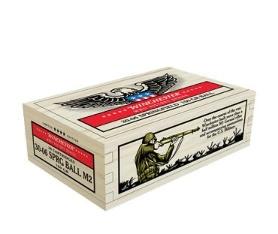
BlackPoint Tactical DualPoint
Molded from a single sheet of Kydex, the DualPoint AIWB holster from Blackpoint Tactical exhibits great f t and f nish, as well as some optional enhancements and an unexpected capability. The DualPoint uses a single, strong metal clip for belt attachment, and thanks to channel cuts beneath the clip, the holster can be adjusted for ride height and cant. Two screws near the dustcover area provide for retention adjustment, and the holster can be furnished with a Plus Pouch magazine carrier (additional cost)—attached by a leather strap—and a concealment strut (included) to better tuck the gun into the carrier’s body. Putting the dual in DualPoint, the holster can be reconf gured as an OWB belt holster—simply attach the included belt loop bracket and reverse the direction of the concealment strut (also a belt loop). Available in dozens of color and camouf age schemes. Price: $95. Contact: BlackPoint Tactical; blackpointtactical.com.
Kolpin Rhino Grip Flex 3.0

The Rhino Grip Flex 3.0 is an ATV/UTV accessory mounting bracket that can be used to secure a variety of objects in the closet, workroom, truck or camper. The unit is made from durable and supple rubber to provide objects up to 3.25" in diameter with a secure and protective grip. A rubber strap, with f ve hole locations for custom adjustments, simply slips over a hard plastic hook molded within the unit. The Rhino Grip Flex 3.0 easily mounts to f at and round surfaces using bolts, screws or hose clamps. Grips are available in black and sold in pairs. A 1.5"-diameter unit is available at lesser cost. Price: $15. Contact: Kolpin Outdoors Inc.; (877) 956-5746; kolpin.com.
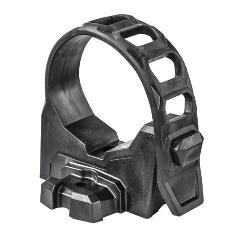
Cabela’s Tactical Tat’r 2
Brimming with storage options and packed with padding, Cabela’s Tactical Tat’r 2 vest allows turkey hunters to conveniently stow all the equipment they’ll need to successfully harvest a tom this fall. In addition to numerous general-purpose pockets, the Tactical Tat’r 2 features a f ip-down electronics compartment, special provisions for box, diaphragm, slate and locator calls, and an expanding large game/decoy bag in the rear. Pads located in the back of the vest and a quick-deploy, 3"-thick Memory Tech foam seat cushion make protracted periods of time backed against a tree more enjoyable. The Tactical Tat’r 2 is available in three sizes, and makes use of Mossy Oak’s Obsession camouf age pattern. Price: $100. Contact: Cabela’s Inc.; (800) 237-4444; cabelas.com.
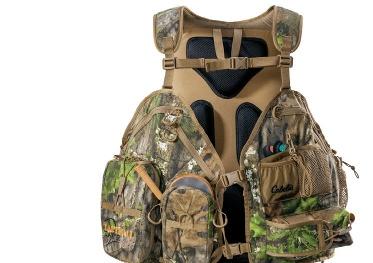
Carry Guard
This defense-oriented gathering is one you won’t want to miss.
BY EVAN BRUNE, Assistant Editor, Digital, Shooting Illustrated
Hundreds of companies and personal-protection experts from every corner of America are heading to Richmond, Va., for the second annual NRA Carry Guard Expo, all bringing the latest in techniques, training and technology to defense-minded citizens. From Sept. 14 to 16, 2018, the Greater Richmond Convention Center will host many of the world’s foremost minds in the areas of concealed carry, personal protection and home defense, offering Americans an opportunity to take advantage of the premier frearmeducation event of the year.
From the start, students of self-defense can choose from more than 120 different seminars and workshops, all tailored to provide education and training on a range of topics. Options abound, from the basics of concealed carry to detailed, armorer-level training.
Some of the fastest-growing segments of gun owners are those who own guns for concealed-carry use, and a number of seminars are aimed at explaining and training for the details of daily carry, focusing on topics such as “Dynamics of Personal Defense” taught by former CIA personal-protection expert and Shooting Illustrated contributor Steve Tarani, or “The Most Important Skills You Will Need in a Gunfght” from Active Self-Protection founder John Correia.
Have the basics of concealed-carry down and want to delve into topics designed to sharpen your skills and keep those around you safe? Other courses focus on mindset, threat assessment and scenario-specifc classes, with topics ranging from “Bullet Proof Mind for the Armed Citizen,” a presentation led by Lt. Col. Dave Grossman, or “How to Interact with Law Enforcement,” a special seminar led by Glen Hoyer, director of the NRA Law Enforcement Division.
In between educational opportunities, show-goers can take advantage of an exhibit hall focused on guns and gear designed for personal protection, home defense and concealed carry. There, more than 200 different companies will showcase the latest equipment designed for daily use, ranging from compact handguns to holsters, belts, clothing and more. At one end of the show foor, an interactive display will provide attendees with scenarios designed to test their awareness, mindset 42
